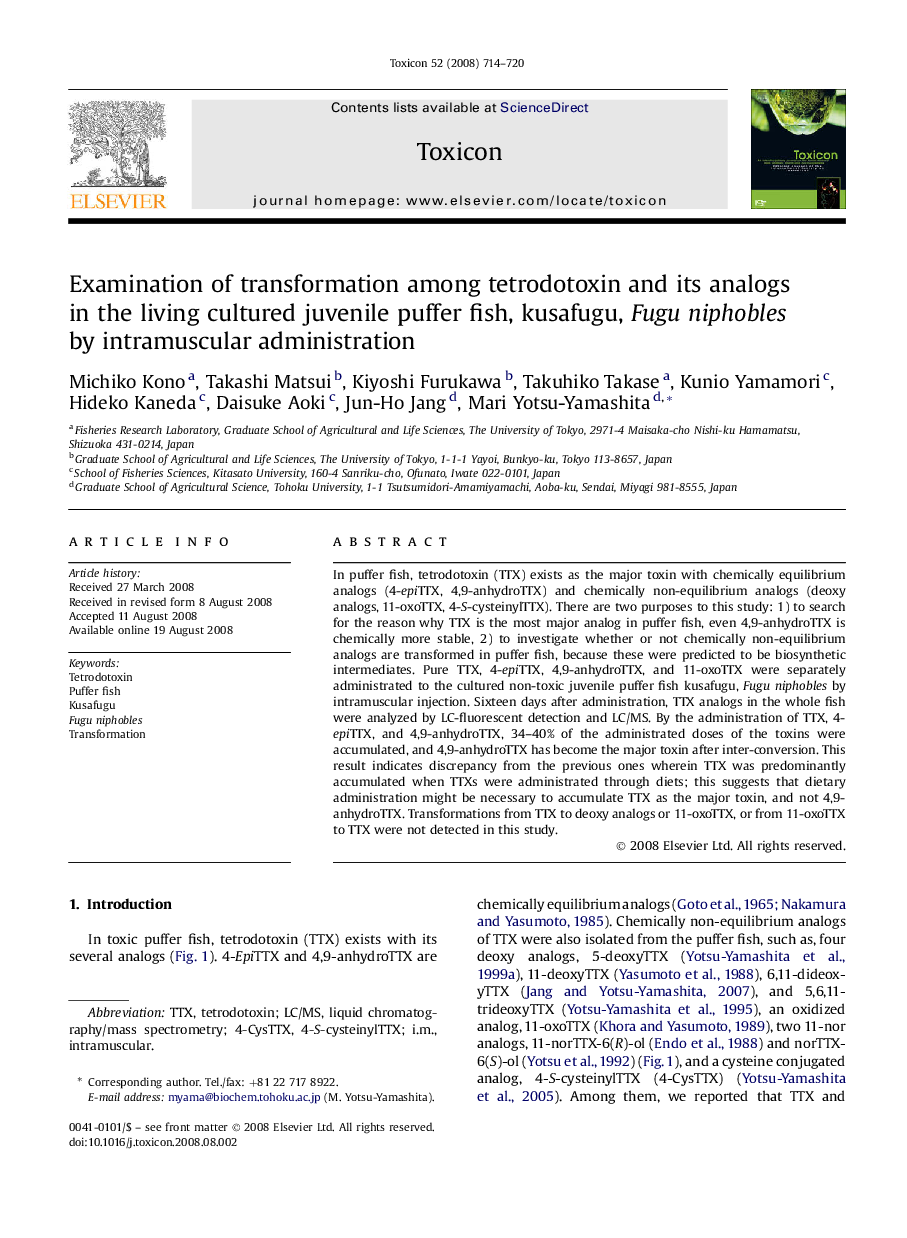| Article ID | Journal | Published Year | Pages | File Type |
|---|---|---|---|---|
| 2066522 | Toxicon | 2008 | 7 Pages |
In puffer fish, tetrodotoxin (TTX) exists as the major toxin with chemically equilibrium analogs (4-epiTTX, 4,9-anhydroTTX) and chemically non-equilibrium analogs (deoxy analogs, 11-oxoTTX, 4-S-cysteinylTTX). There are two purposes to this study: 1) to search for the reason why TTX is the most major analog in puffer fish, even 4,9-anhydroTTX is chemically more stable, 2) to investigate whether or not chemically non-equilibrium analogs are transformed in puffer fish, because these were predicted to be biosynthetic intermediates. Pure TTX, 4-epiTTX, 4,9-anhydroTTX, and 11-oxoTTX were separately administrated to the cultured non-toxic juvenile puffer fish kusafugu, Fugu niphobles by intramuscular injection. Sixteen days after administration, TTX analogs in the whole fish were analyzed by LC-fluorescent detection and LC/MS. By the administration of TTX, 4-epiTTX, and 4,9-anhydroTTX, 34–40% of the administrated doses of the toxins were accumulated, and 4,9-anhydroTTX has become the major toxin after inter-conversion. This result indicates discrepancy from the previous ones wherein TTX was predominantly accumulated when TTXs were administrated through diets; this suggests that dietary administration might be necessary to accumulate TTX as the major toxin, and not 4,9-anhydroTTX. Transformations from TTX to deoxy analogs or 11-oxoTTX, or from 11-oxoTTX to TTX were not detected in this study.
